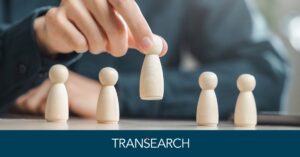Onboarding Executive Leadership: Investment Cost vs. ROI
A well-executed onboarding process drives ROI by accelerating productivity, building trust, and fostering relationships across the organization—and as such, many stakeholders find it’s an essential investment. Without it, companies risk dissatisfaction, team culture dissolution and even early departures, especially among leaders accustomed to structured integration programs.
The bottom line? Quality leadership demands quality onboarding processes and infrastructure—otherwise known as the two primary keys to positive momentum and higher profitability potential.
Best Practices for Executive Onboarding
Not sure where to go when it comes to optimizing your onboarding process? You’re not alone. Many leaders can feel overwhelmed due to the sheer magnitude of the process that typically co-occurs with an impending transition of leadership.
That’s why our experts have simplified the process down into several key steps and best practices, helping you get the most out of your executive onboarding experience. We’ve summarized each down below:
- Pre-Onboarding Preparation: We recommend stakeholders initiate onboarding before day one with a welcome packet, stakeholder introductions, and relevant documentation. Starting proactively and as early as possible aids in the ease of the transition as a whole, giving all parties ample time to react, move, and settle in.
- Tailored Onboarding Plans: Every person is unique, and each role is different. It’s always best to customize the onboarding process to the executive’s role and preferences where possible, addressing their unique challenges and opportunities upfront. Doing this also allows stakeholders to understand what other steps and changes are needed at a department level to make the transition as effective as possible.
- Ongoing Support: Successful executive integration requires ongoing mentorship and regular feedback to address evolving needs. Keeping the lines of communication open is an integral step to preserving workplace culture and morale, proactively keeping frustration and inefficiency at bay where possible.
- Strategic Alignment: Stakeholders should consider aligning the executive’s priorities with organizational goals and KPIs early on in the onboarding process. Having a level-set and ensuring that all parties are moving synchronously will stave off unnecessary friction later on in the working relationship.
- Relationship Building: As you integrate your new executive talent, consider creating opportunities for interactions with peers, teams, and key stakeholders to build trust and cohesion.
The Bottom Line: Executive Onboarding is More Than Just A Warm Welcome
Executive onboarding isn’t just about making new hires feel welcome. It’s about equipping them to lead with confidence, ensuring a smoother transition, and maximizing their contribution.
Ready to refine your executive onboarding process? Access our “Effective Integration Exercise for Incoming Executives” workbook and set your leaders—and your organization as a whole—on a path to long-term success.
Effective Integration Exercise for Incoming Executives
Executive search and hiring is just one step to long-term success. Learn how to integrate new hires effectively using proven onboarding strategies.





































































